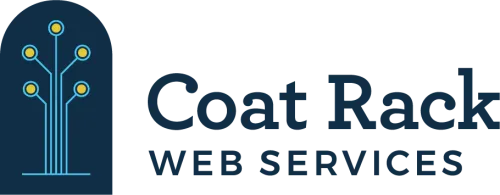March 19, 2025
Choosing the right software development approach can drive nonprofit success. Whether using off-the-shelf software solutions or investing in custom apps, the decision affects scalability, efficiency, and long-term goals.
Nonprofit software development strategies play a crucial role in ensuring the selected approach leads to sustained growth. As the Worldwide Non-Profit Fundraising Software Market Size is expected to reach USD 9.5 billion by 2033, nonprofits must prioritize informed program decisions to stay competitive and effective.
In this guide, we'll break down key factors nonprofits should consider when designing their digital infrastructure and why IT planning matters.
Understanding Nonprofit Software Development Needs
Nonprofits face unique challenges compared to businesses. Limited budgets, resource constraints, and diverse community needs require careful planning when selecting nonprofit software development solutions. To make the right decision, nonprofit organizations should identify key operational needs, ensure scalability, set realistic budgets, and confirm integration with existing systems like accounting or customer relationship management (CRM) platforms.
Nonprofit software development also emphasizes addressing these factors to avoid investing in programs that fail to meet long-term objectives. With proper nonprofit software development, organizations can ensure seamless operations and alignment with their growth strategies. Nonprofit software development practices not only address immediate needs but also foster adaptability for future expansions.
When to Choose Off-the-Shelf Solutions for Your Nonprofit
Off-the-shelf solutions are prebuilt, ready-to-use program products that can be quickly implemented by nonprofit organizations. They are ideal for managing basic operations without extensive customization.
Benefits of Off-the-Shelf Solutions:
-
Quick Implementation: Since the program product is prebuilt, it can be deployed rapidly without significant development time.
-
Cost-Effective: Off-the-shelf solutions typically come with lower initial costs compared to custom program development.
-
Vendor Support and Updates: Ongoing maintenance, security patches, and updates are managed by the program development company, reducing the burden on internal teams.
The affordability and convenience of these program solutions make them a popular choice for smaller nonprofits or those with limited IT resources.
Limitations of Off-the-Shelf Solutions:
-
Limited Customization: These solutions may not fully meet the unique business needs of a nonprofit organization, leading to workarounds and inefficiencies.
-
Scalability Challenges: As your organization grows, off-the-shelf programs for nonprofits may struggle to scale or adapt to new programs and processes.
-
Vendor Dependence: Updates, new features, or troubleshooting rely on the vendor's timeline, which may cause delays.
These limitations can become obstacles as nonprofits grow and require more tailored or integrated solutions.
Recommendation:
Off-the-shelf solutions are ideal for nonprofits with basic needs, tight budgets, or those seeking immediate functionality without customization. However, as your nonprofit scales, consider transitioning to custom program development services to address more complex or evolving requirements.
Key Takeaway: Off-the-shelf program solutions provide quick implementation, but custom program solutions may offer better long-term growth and flexibility.
Building a Strong Digital Infrastructure for Efficiency
A well-planned digital infrastructure improves internal workflows and maximizes productivity. A strong digital infrastructure ensures that all systems work cohesively, reducing delays and inefficiencies. By establishing a comprehensive digital infrastructure, nonprofits can create stronger connections between teams and data. Follow these steps to build an effective management system that supports your nonprofit sector's growth:
Step 1: Integrate Tools Across Departments
Identify key program systems like donor management software, accounting tools, and project trackers. Ensure they communicate seamlessly through integrations, minimizing data silos and promoting collaboration within your digital infrastructure.
Step 2: Centralize Data for Easy Access
Consolidate data into a central hub where team members can access up-to-date information without duplication. This step helps improve data management, reporting accuracy, and decision-making by leveraging a unified digital infrastructure.
Step 3: Strengthen Security and Compliance
Implement robust data security measures to protect sensitive information, such as donor details and financial records. Ensure compliance with regulations and regularly review security protocols to address new risks, solidifying your digital infrastructure.
By following this step-by-step guide, nonprofits can streamline their operations, reduce bottlenecks, and optimize time and resources for greater efficiency within a reliable digital infrastructure.
How Custom App Development Enhances Nonprofit Software Success
Custom program development goes beyond off-the-shelf solutions by offering tailored functionality and long-term adaptability, making them an ideal choice for nonprofits seeking growth and efficiency.
1. Tailored Solutions
Custom program solutions are built to address specific nonprofit needs, whether it's tracking donors, managing volunteers, or running campaigns. This level of customization ensures that every feature aligns with your organization's mission.
2. Long-Term Scalability
Unlike off-the-shelf programs, custom apps can grow and evolve with your organization. As your nonprofit takes on new programs or expands its reach, the program can be updated seamlessly to meet new demands without disruption.
3. Improved User Experience
With custom apps, you can design user interfaces that suit your team's workflow. By eliminating unnecessary features and focusing on usability, your staff can work more efficiently and keep track of tasks without time-consuming workarounds.
4. Better Integration Capabilities
Custom apps integrate seamlessly with existing systems, such as CRMs, accounting tools, or project management platforms. This enables data sharing across departments and eliminates manual data transfers, improving overall data management.
5. Enhanced Security
Custom program development allows nonprofits to implement advanced data security measures tailored to sensitive information, such as donor and financial data. By controlling security protocols, you reduce the risk of breaches and ensure compliance.
Overall, custom program solutions empower nonprofits to achieve operational success by offering tailored, scalable, and secure program development services that evolve with their growth.
Why IT Planning is Critical for Software Success
Effective IT planning ensures that your nonprofit's software solutions align with organizational goals and deliver long-term value. By carefully managing resources, timelines, and stakeholder involvement, IT planning helps nonprofits achieve sustainable growth and efficiency.
IT Planning Aspects and Their Impact on Success
|
Key IT Planning Aspect |
Impact on Software Success |
|
Setting Clear Objectives |
Ensures that the program is built or chosen to meet specific goals. |
|
Budget and ROI Analysis |
Helps balance financial constraints with long-term benefits. |
|
Involving Key Stakeholders |
Ensures that the end-users' needs are addressed, increasing adoption. |
|
Developing a Roadmap |
Provides clear implementation timelines and future upgrade paths. |
|
Continuous Monitoring and Review |
Allows for regular improvements and ensures the program remains relevant. |
3 Actionable Tips for Effective IT Planning:
-
Engage Early and Collaboratively: Involve team members, board members, and other stakeholders at the beginning of the development process to ensure collective input and support.
-
Prioritize Scalability: Ensure that any selected solution or custom-built program can grow alongside your nonprofit organization's evolving needs.
-
Schedule Periodic Reviews: Regularly evaluate program performance and adjust plans to stay aligned with your nonprofit sector's long-term goals.
By incorporating proactive IT planning into these steps, nonprofits can maximize program efficiency and ensure smooth scalability.
With strategic IT planning and the right development partner, nonprofits can make informed program decisions that lead to better outcomes and long-term success.
Making the Right Choice with Coat Rack
We understand the challenges nonprofits face when choosing the right software. Balancing immediate needs, long-term growth, and budget constraints can be overwhelming.
The decision between off-the-shelf software solutions and custom software development depends on your nonprofit's unique requirements and growth trajectory. Off-the-shelf options are practical for basic, immediate needs, while custom software solutions provide long-term flexibility and tailored functionality.
Coat Rack, as your dedicated software development partner, can help by providing expert guidance and seamless development services. We help nonprofit organizations create software that scales effectively and supports their mission. Whether you need to create custom management software, automate processes, or streamline operations, our development team ensures that your software aligns with your goals and serves your communities effectively.
Book a free consultation with us today to get started!



